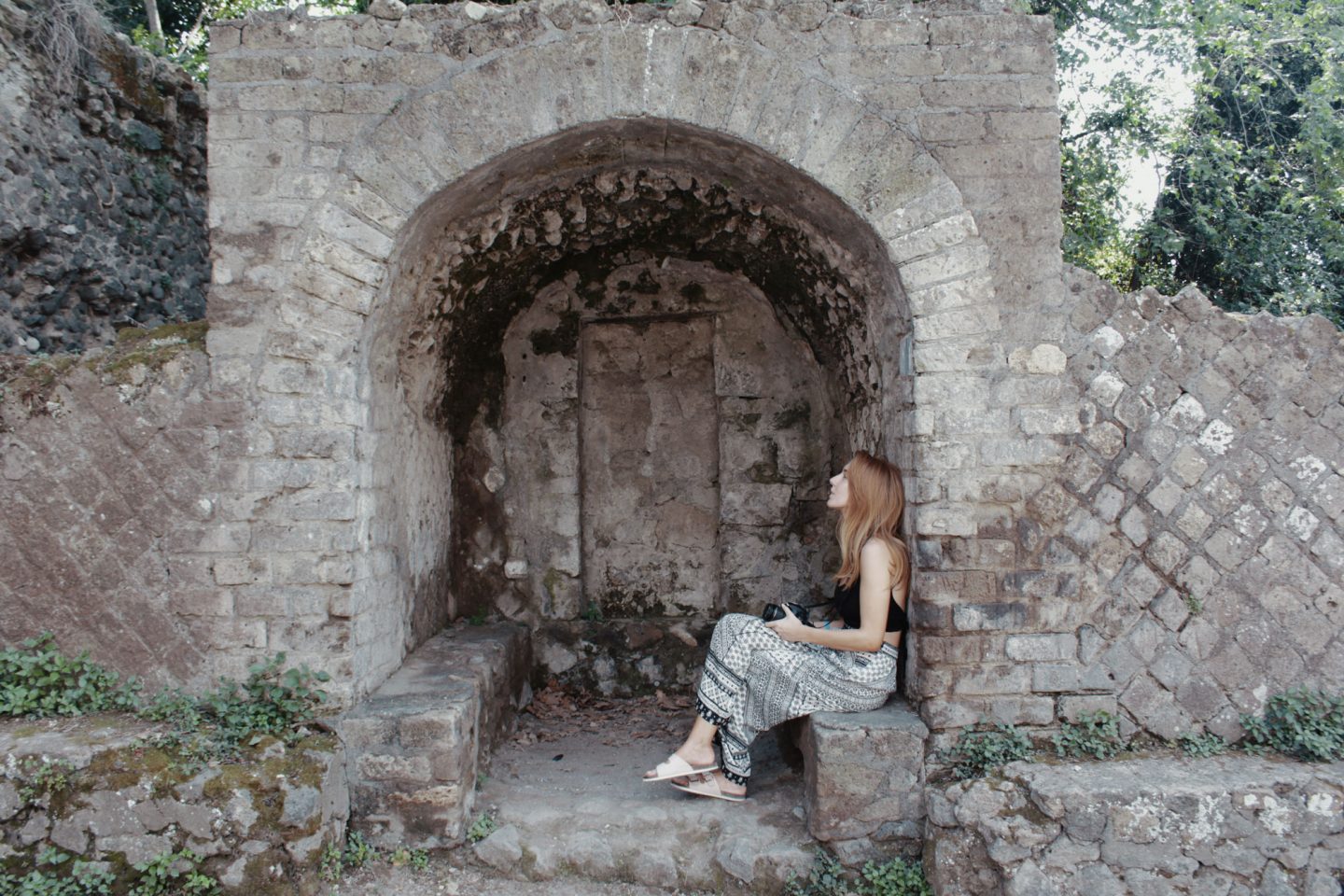
In AD 79, Southern Italy, a volcano erupted and caused the obliteration of a Roman city. The sleeping Mt Vesuvius suddenly exploded, raining ash and sulfur down on Pompeii and burying it for over a thousand years. Its rediscovery in the 1700s found it virtually intact. Almost everything was preserved, including pottery, artwork and the bodies of those who didn’t make it out in time, their arms still shielding themselves from the downpour of the volcano. Vesuvius wasn’t even known to be a volcano when it erupted. It was thought to be a normal mountain, with locals clueless as to what lay beneath.
I’ve wanted to visit Pompeii ever since I read about it in school. I knew it was a place that had been buried under volcanic ash, and I knew you could see the contorted bodies of victims as they had died. But that was the limit of my knowledge. Ben and I recently took a trip to Sorrento, Italy for some much needed downtime. With Pompeii on our doorstep, we had to go and explore this ruined city.
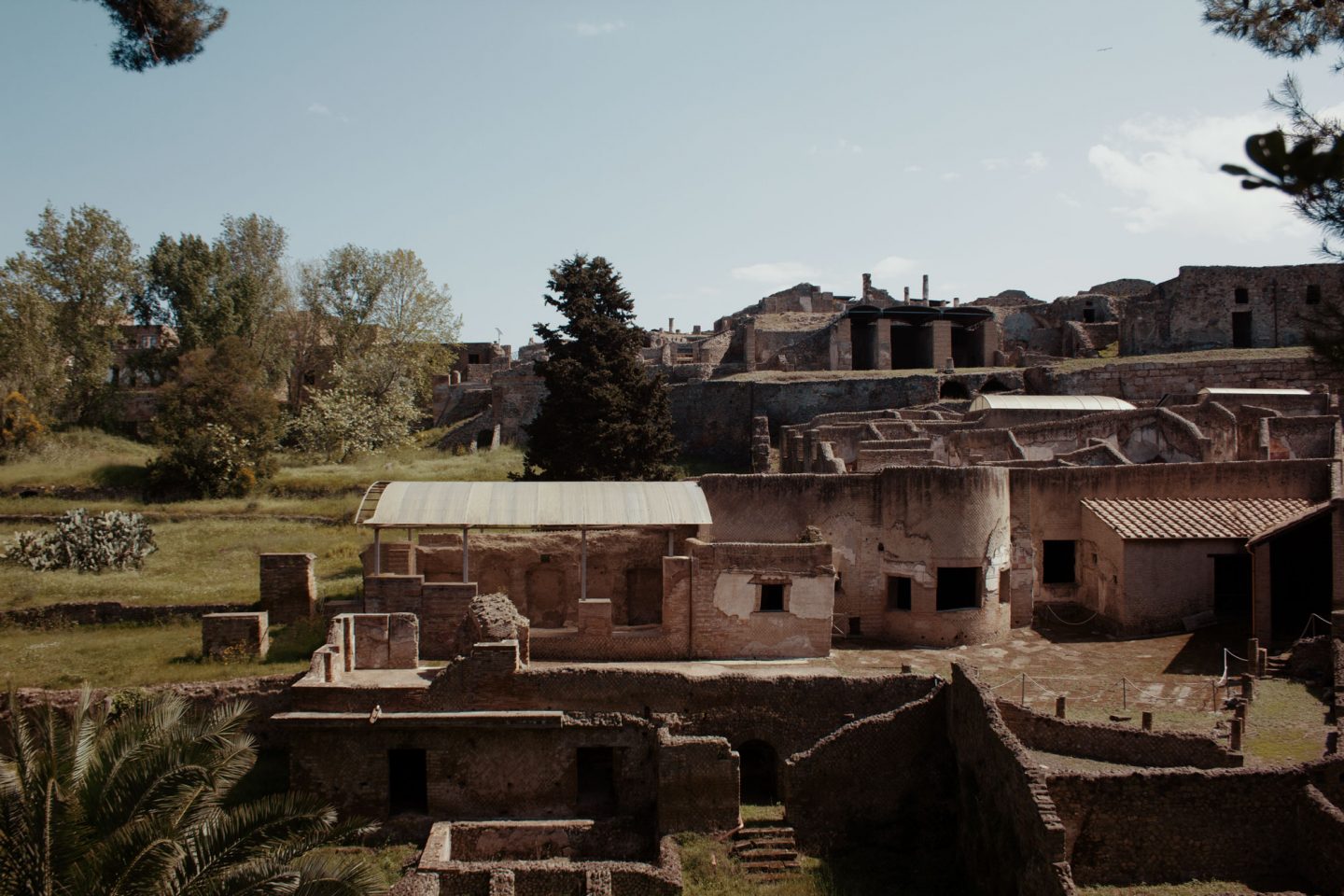
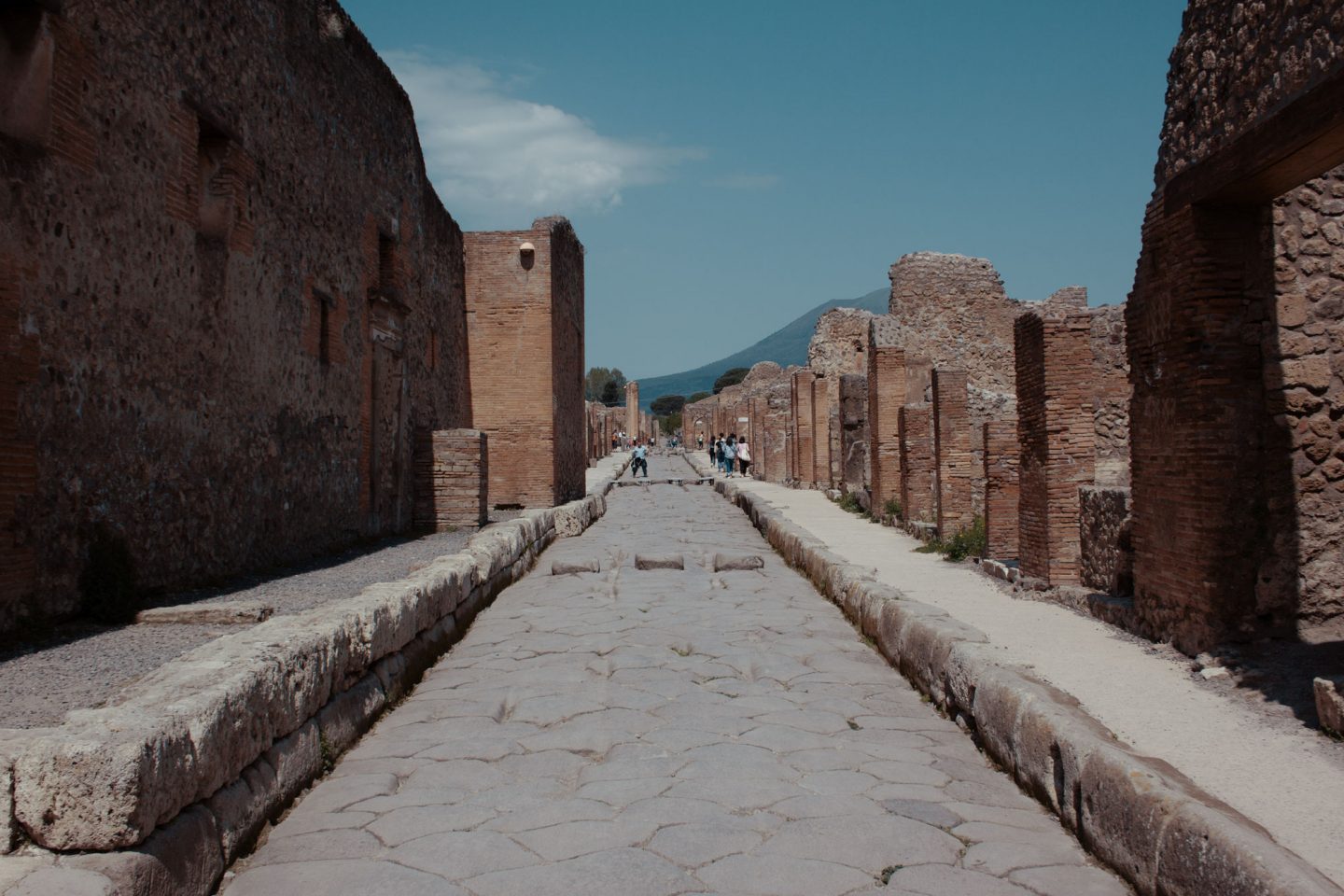
A city trapped in time
I never realised how big Pompeii was. I had always assumed it was an unlucky, small town buried in the Italian hills. Pompeii was in fact a very large Roman city. It had temples, a large forum, an amphitheatre with gladiator fights, a theatre and much, much more. The streets are a labyrinth of walkways, alleyways and cobbled highways. You can even visit the local brothel tucked away behind the main road. Explicit frescos are painted on the walls and the rooms still have their stone beds. What I think makes this city amazing is how well preserved the walls and layout are. The roofs may be long gone, but when you can stroll from room to room it’s difficult to imagine just how old this all is. Some buildings are crumbling to pieces, chunks of stone littering the floor. Others have given themselves over to nature, full of lush green grass, fruit trees and vineyards. The air in Pompeii is dry and the floor is dusty. Vesuvius looms nearby, never far from sight.
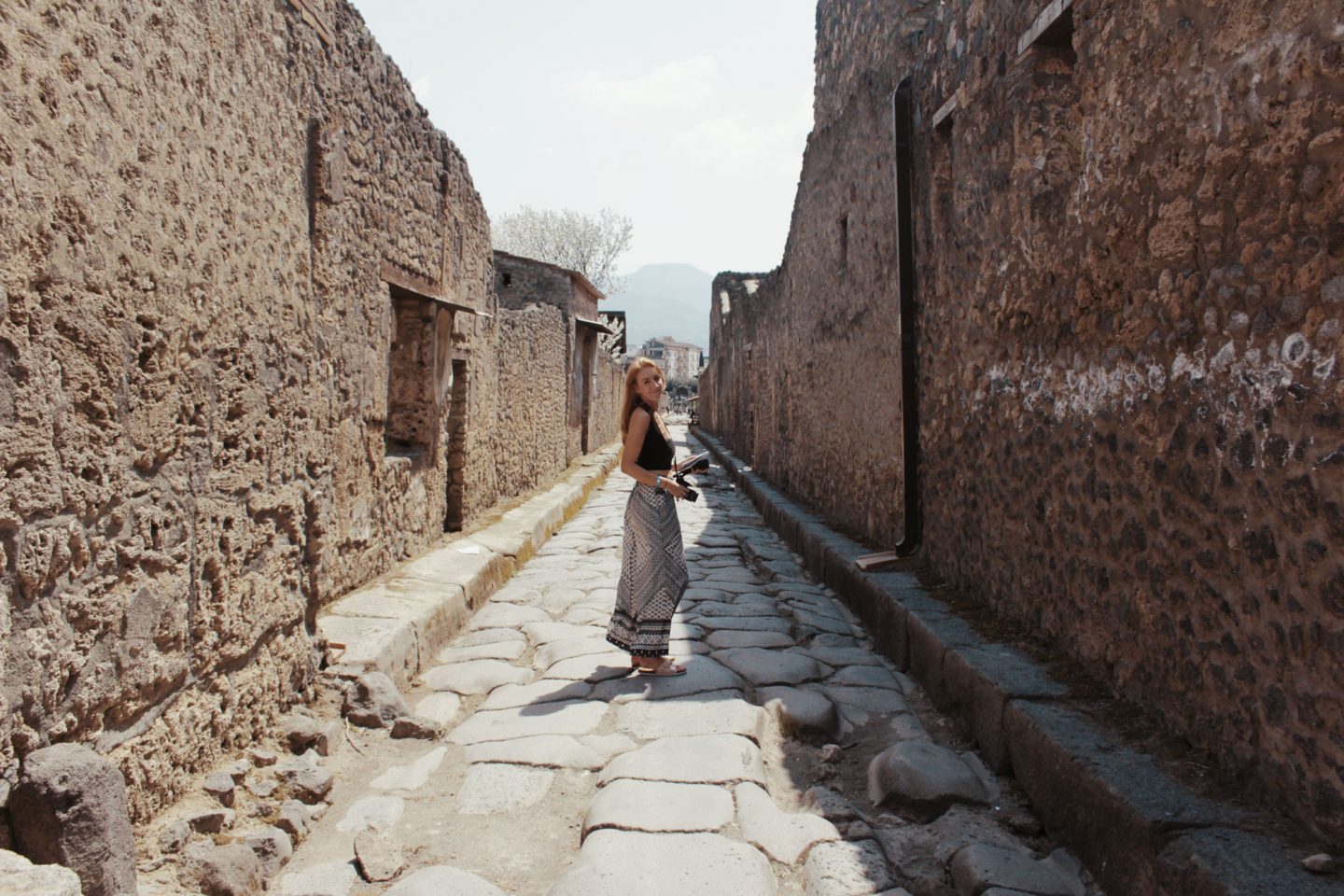
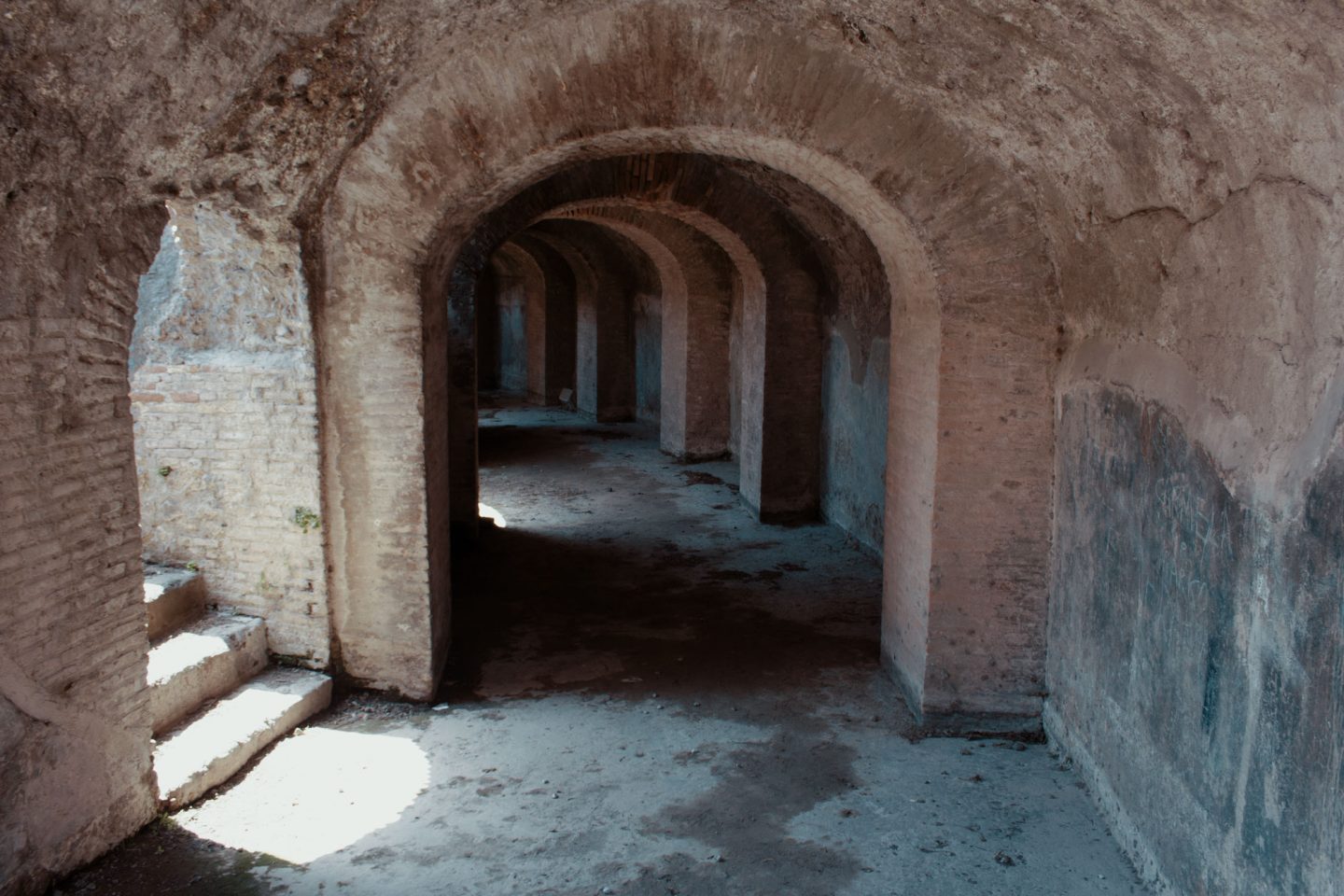
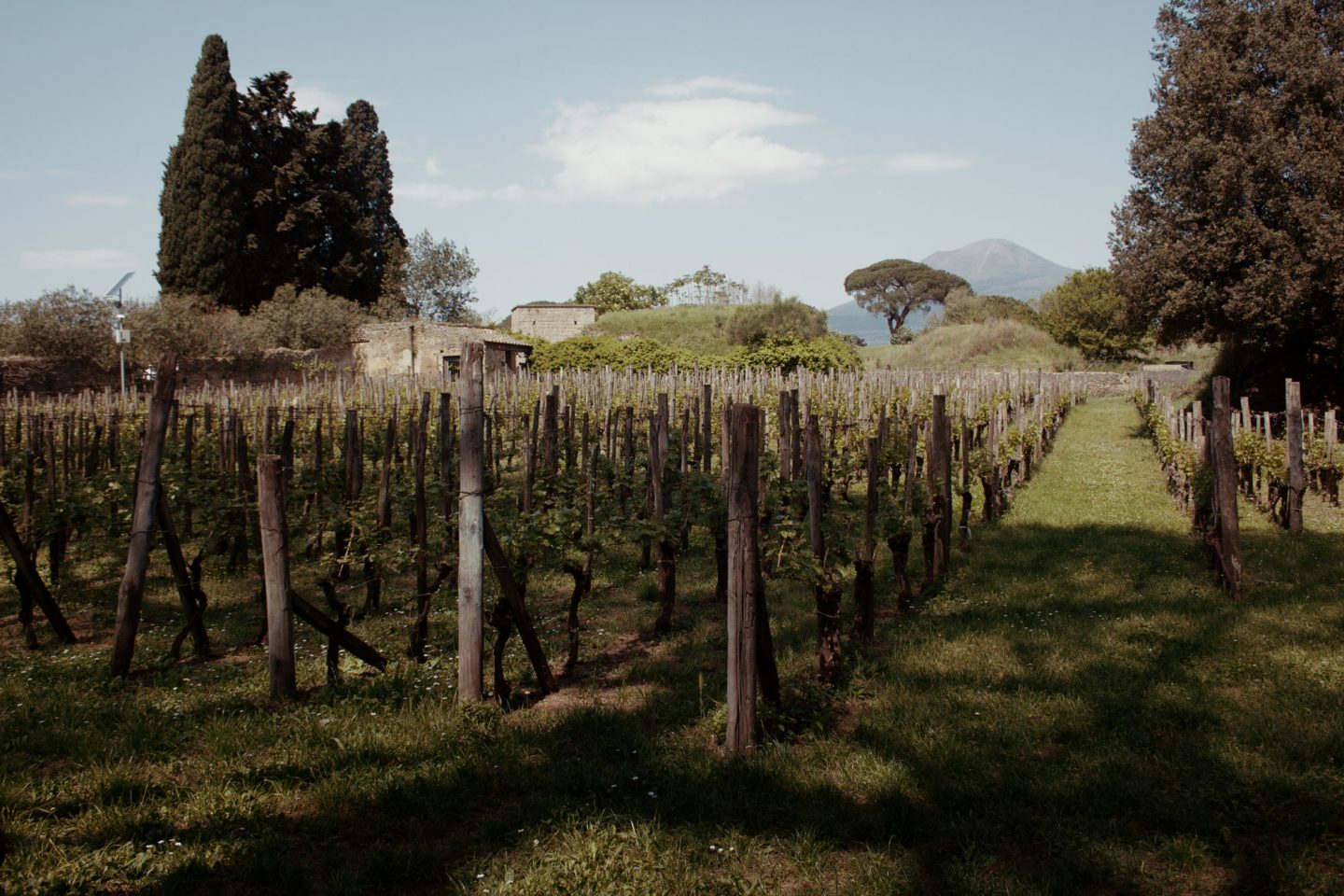
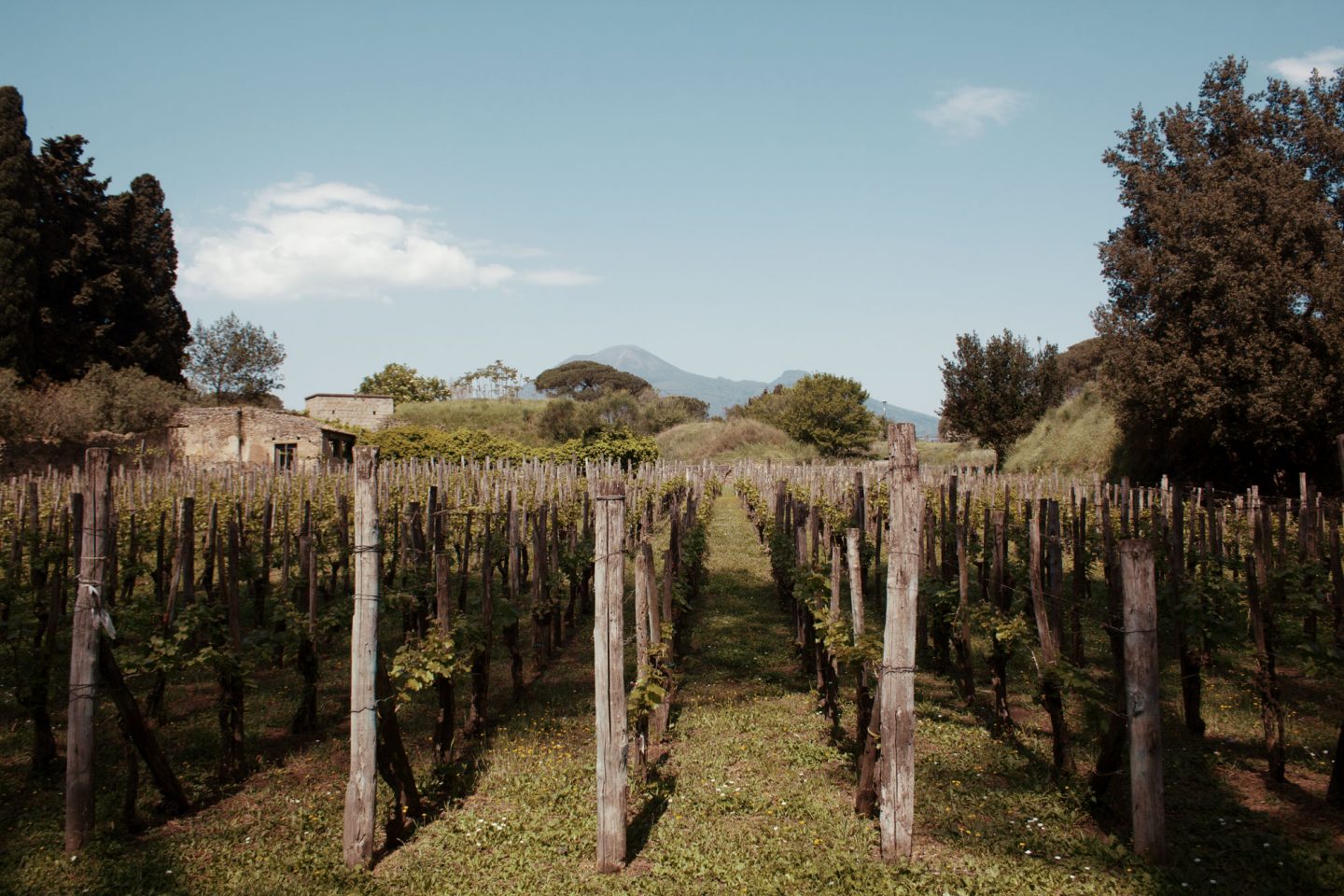
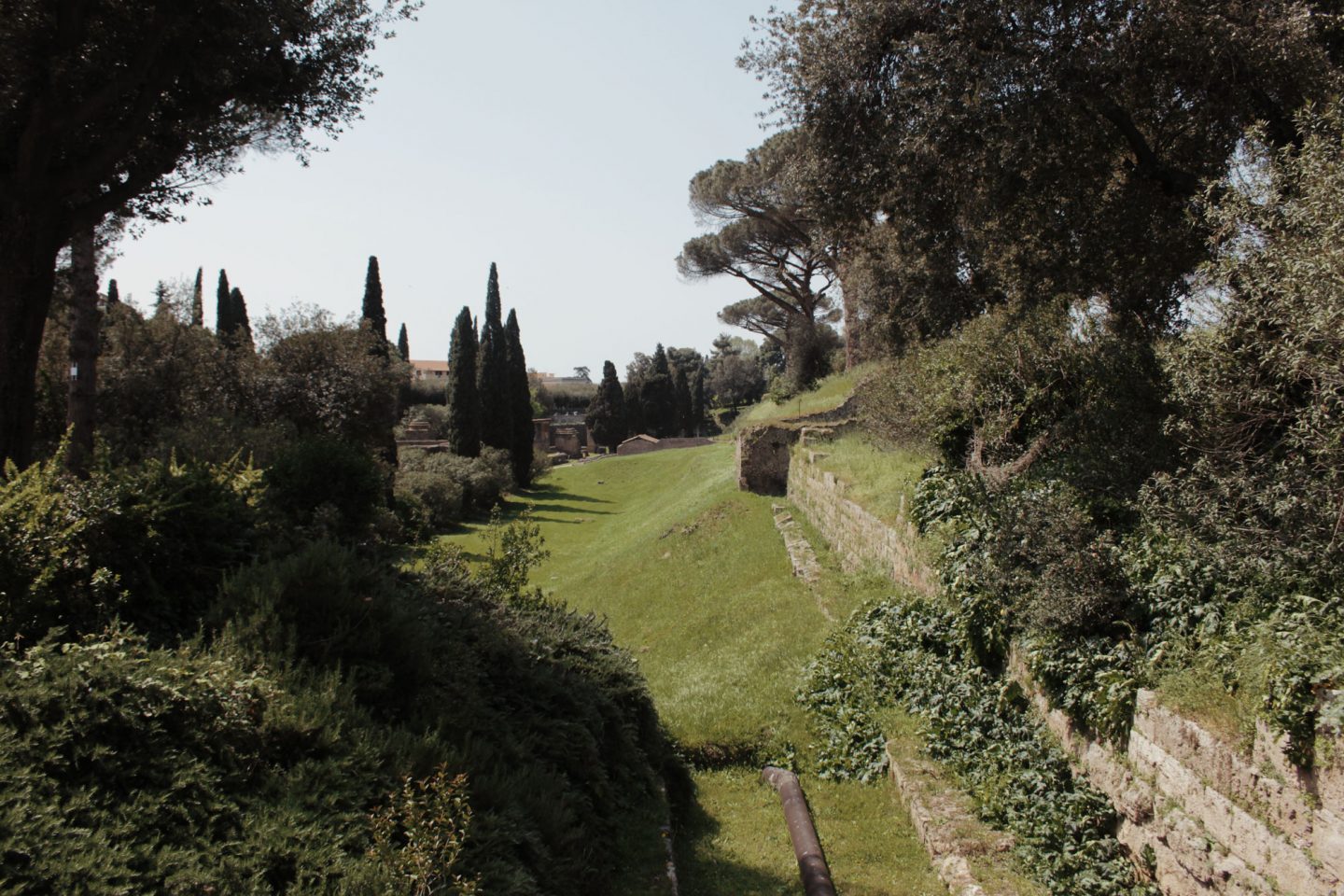
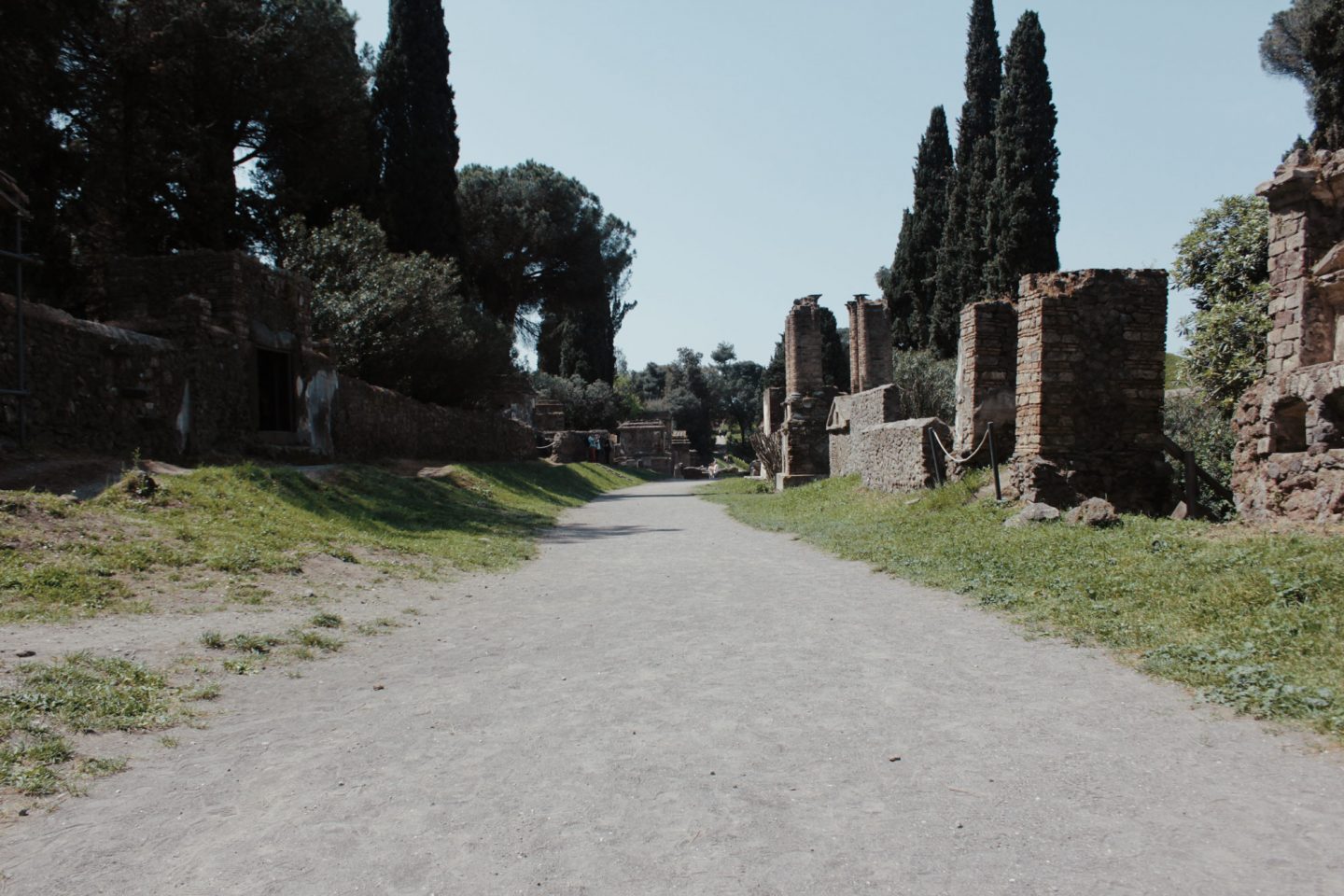
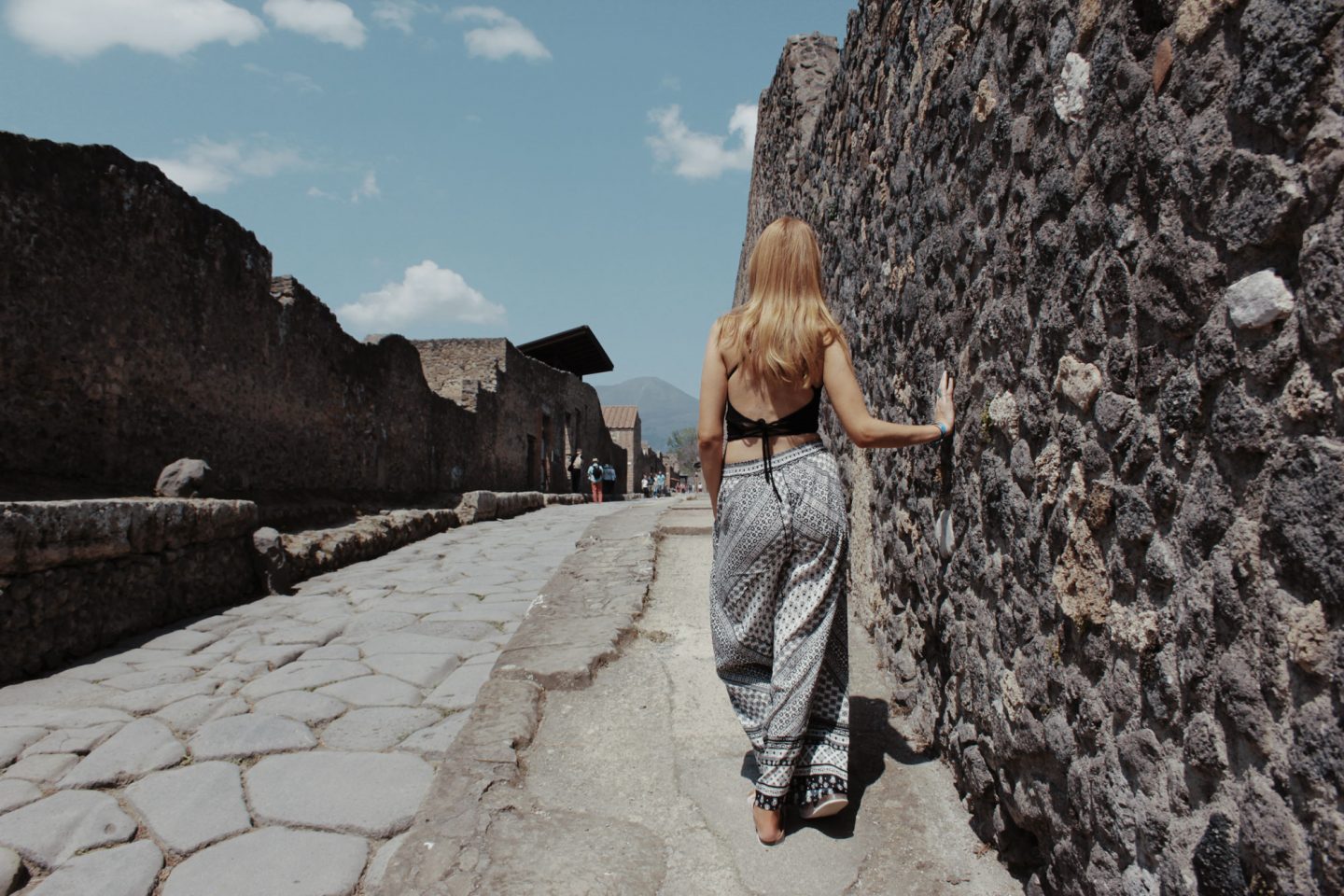
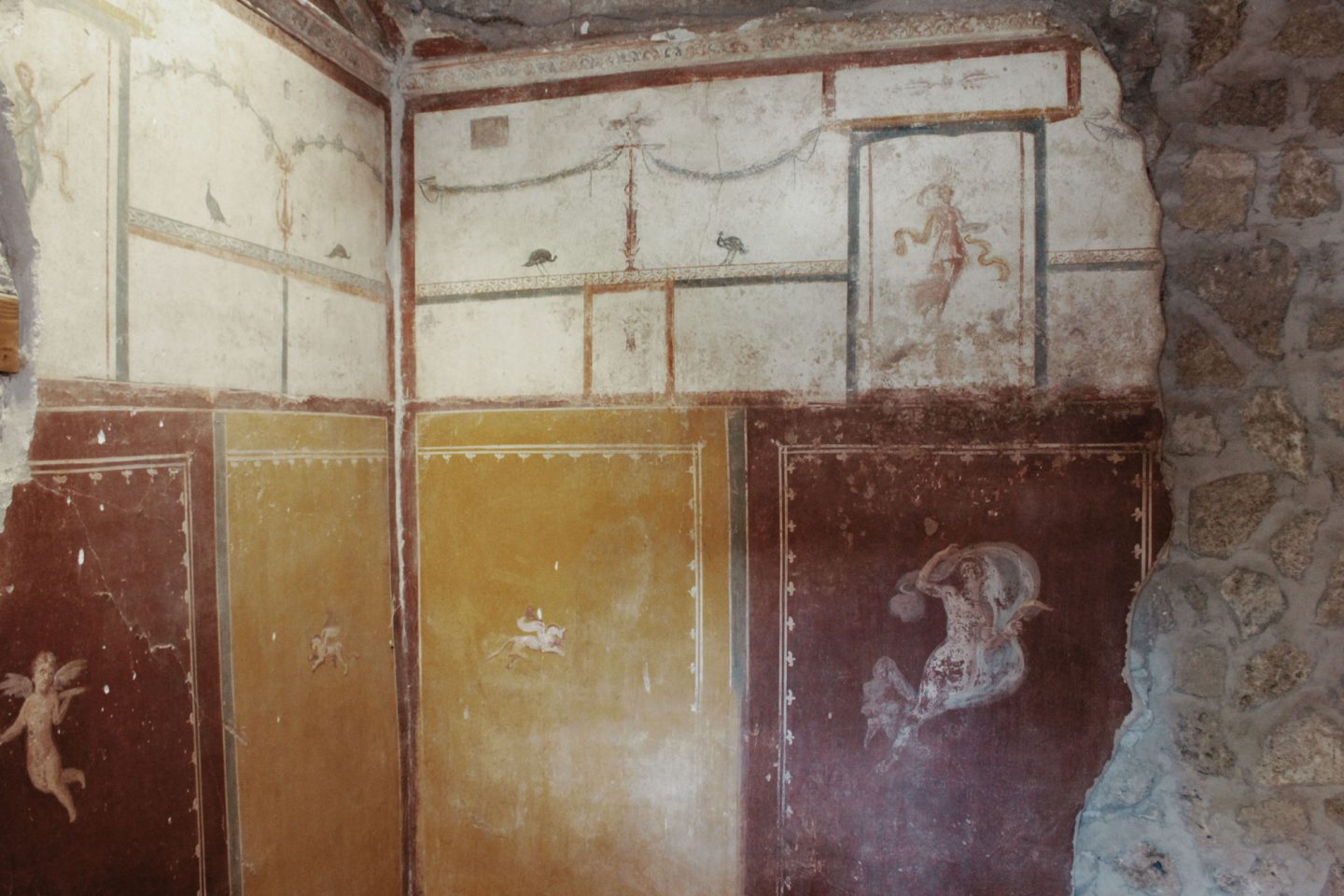


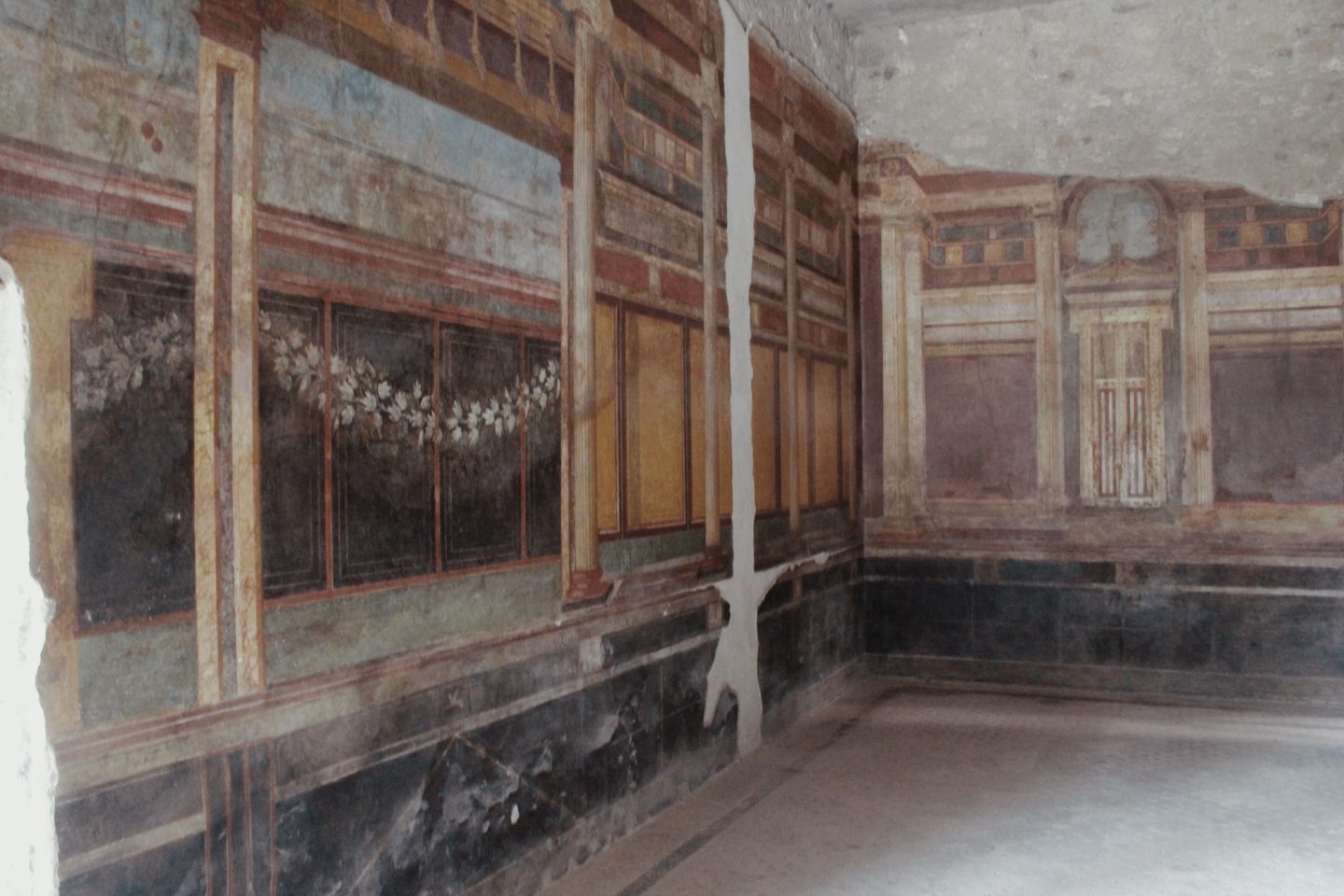
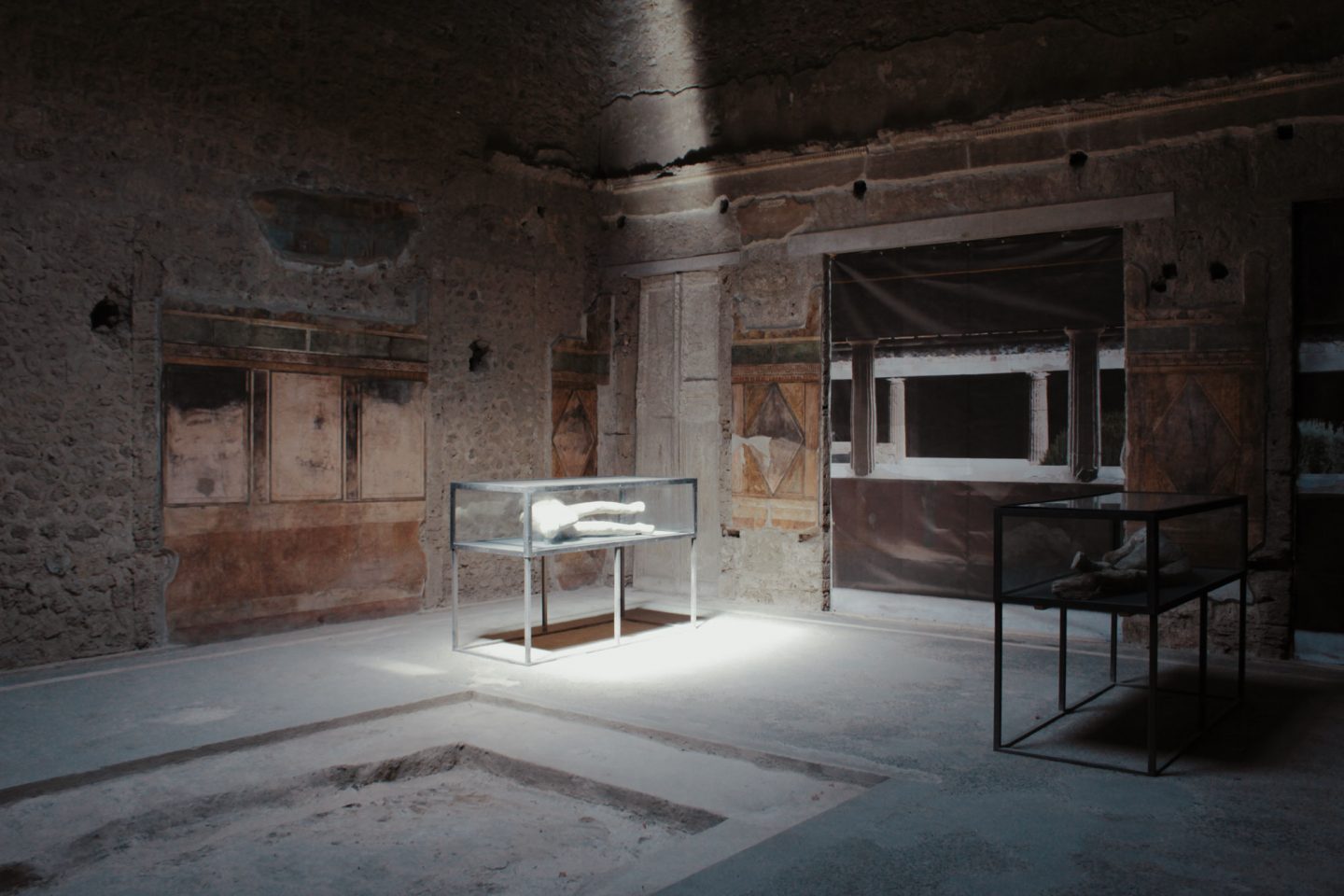
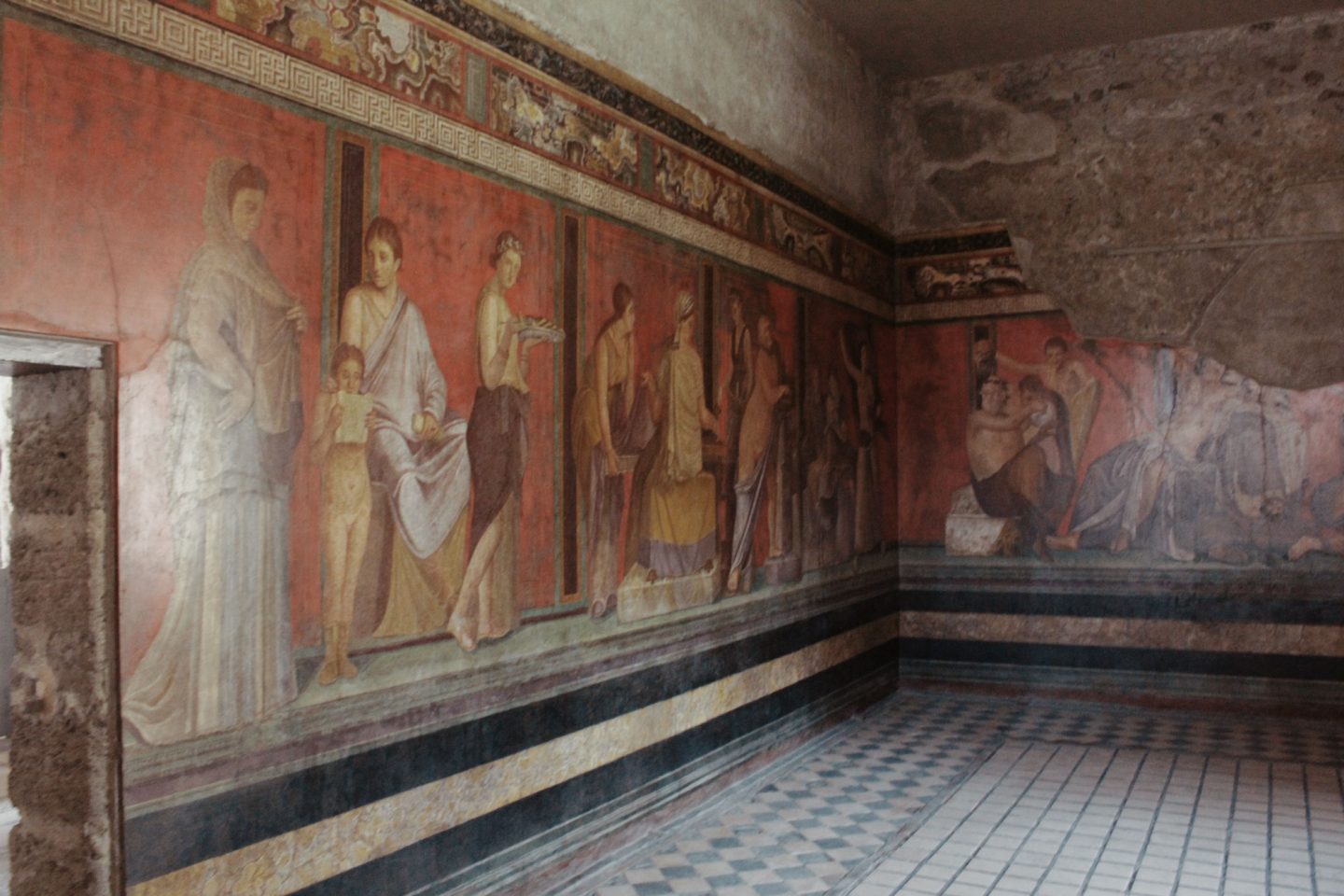
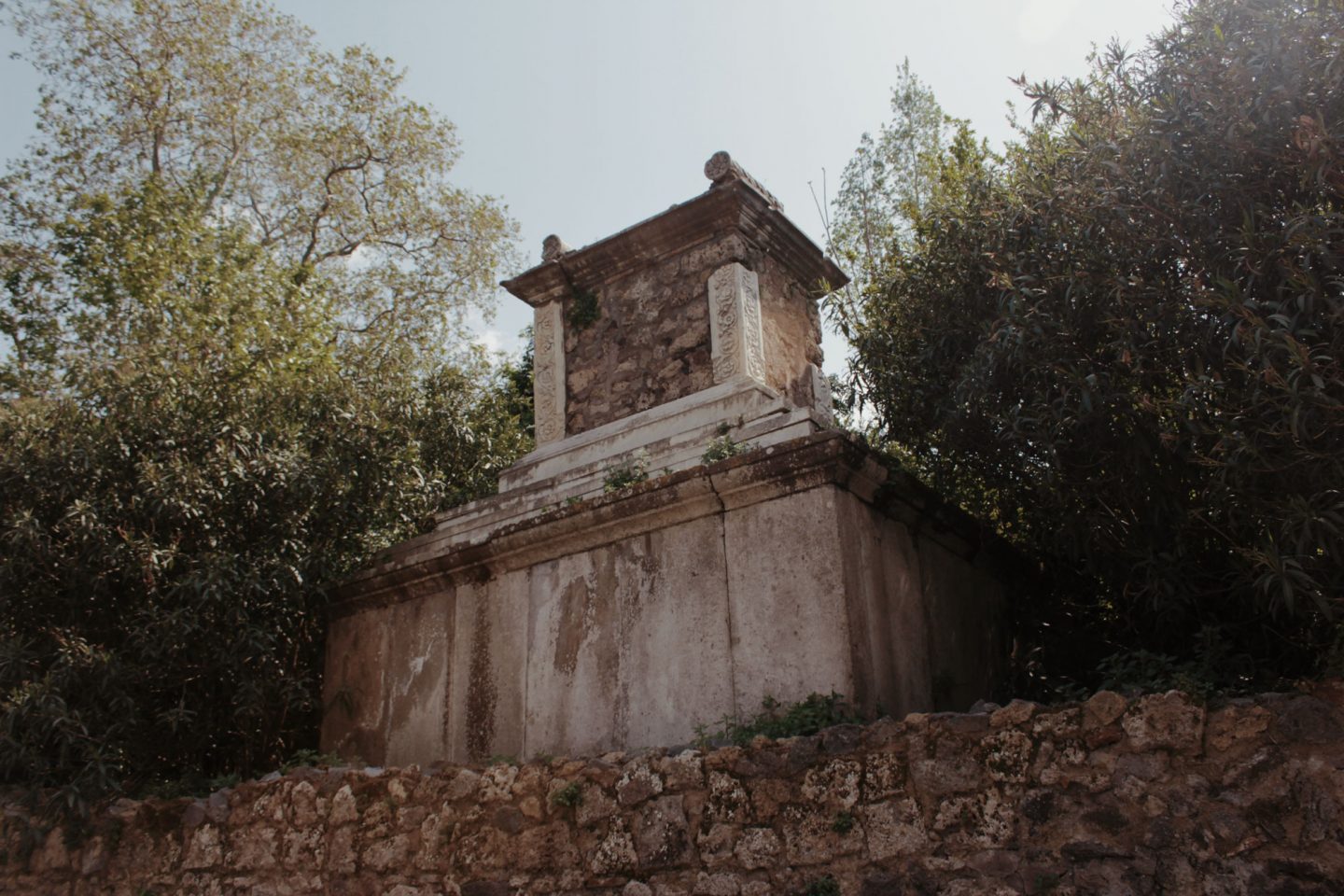
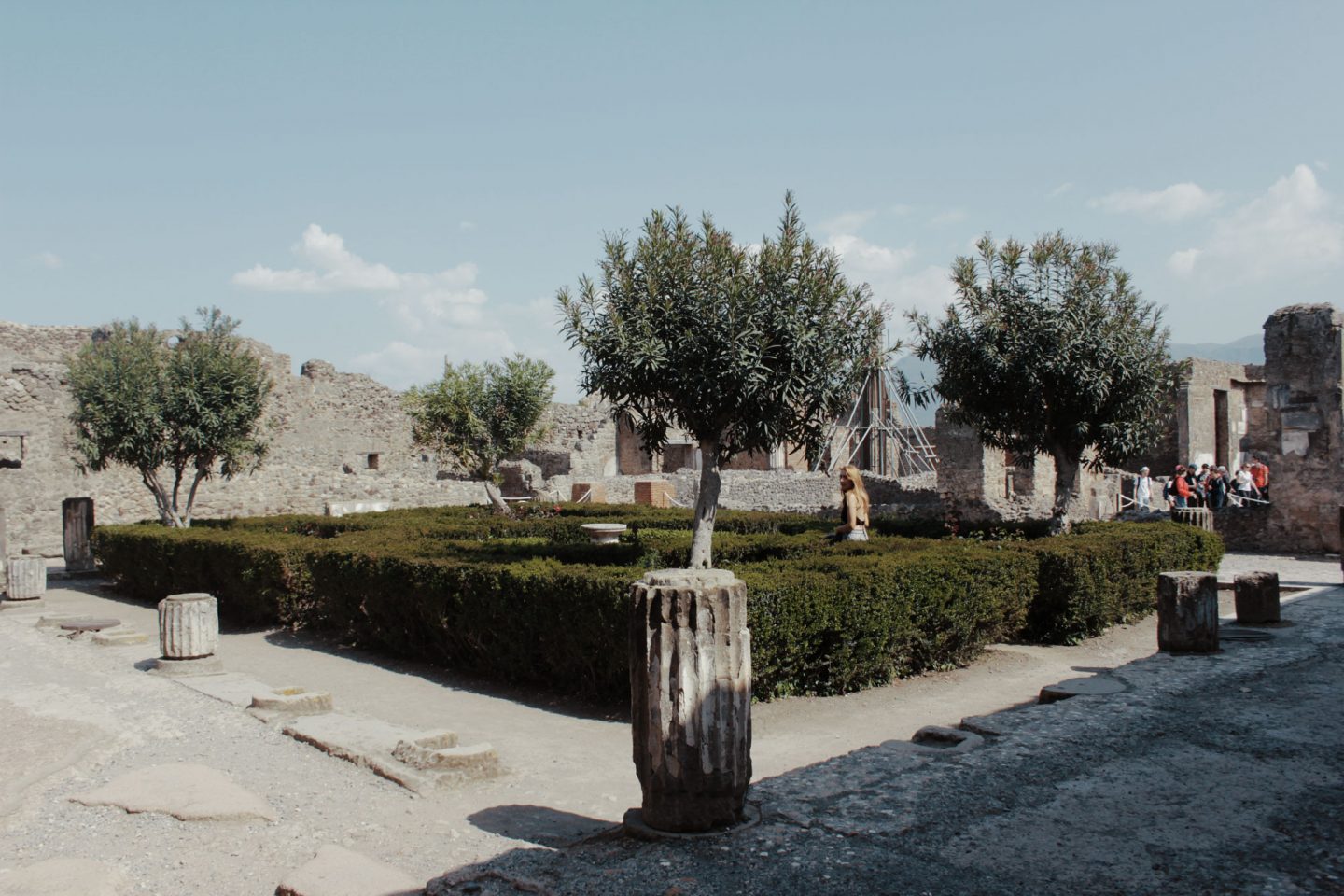
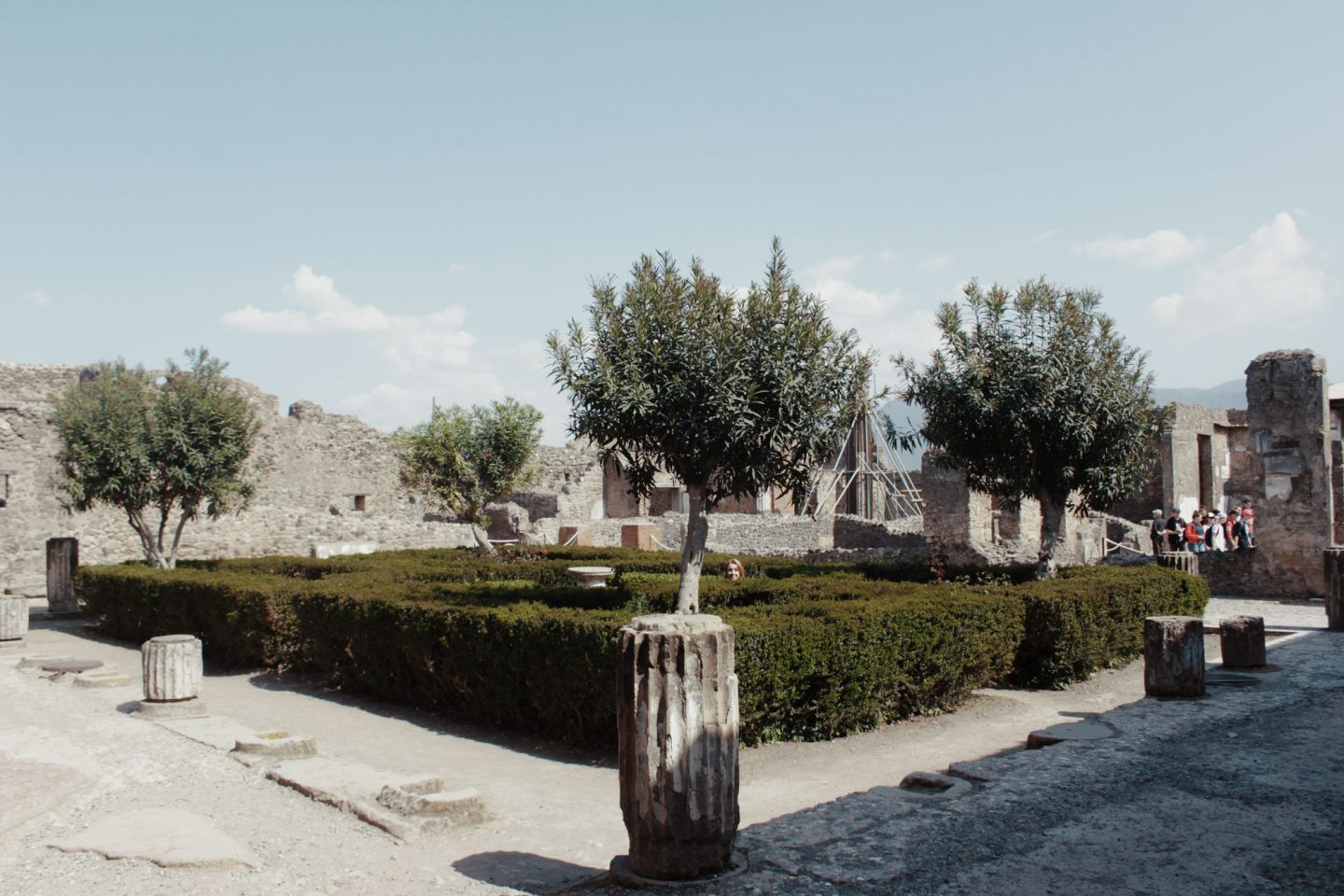
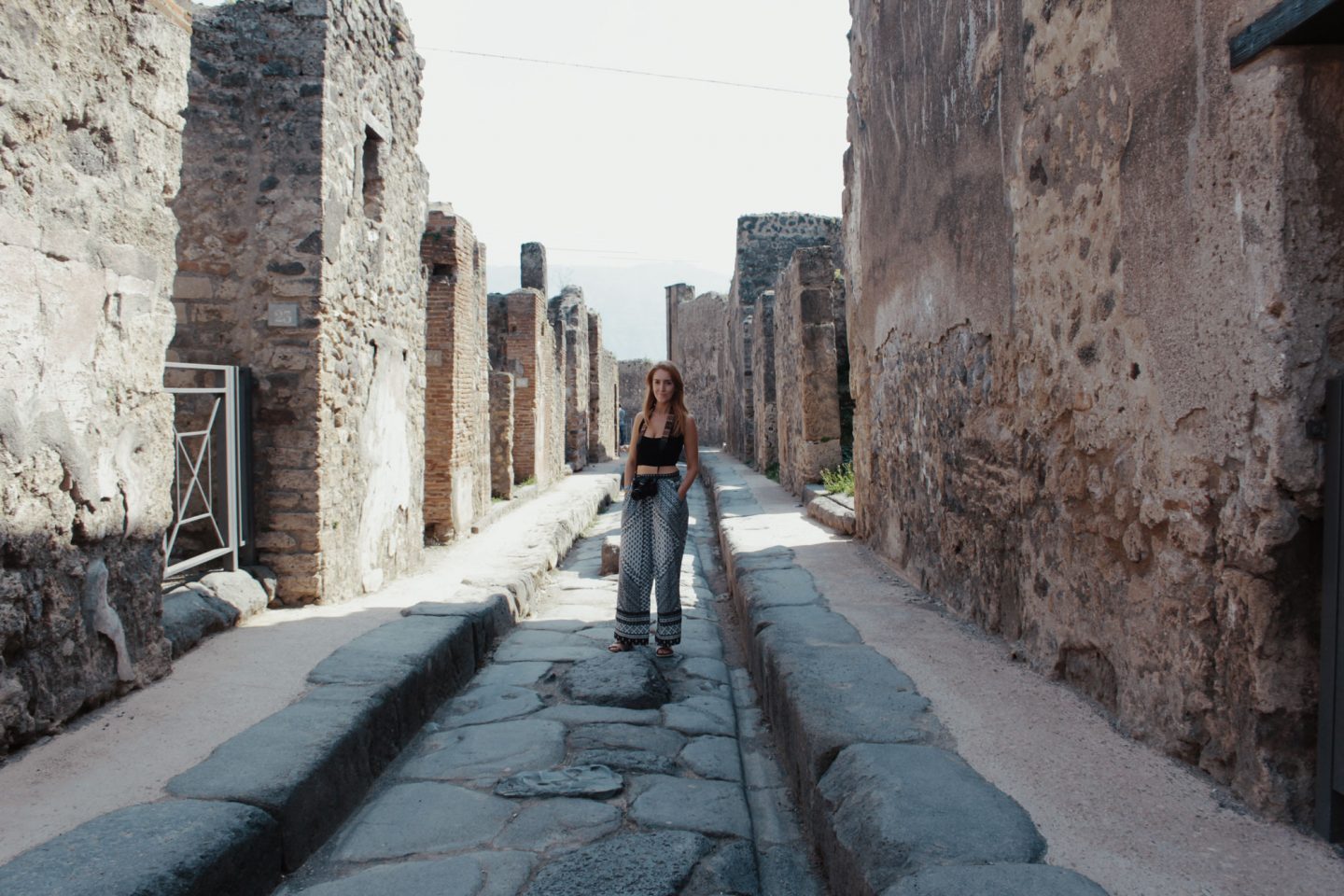
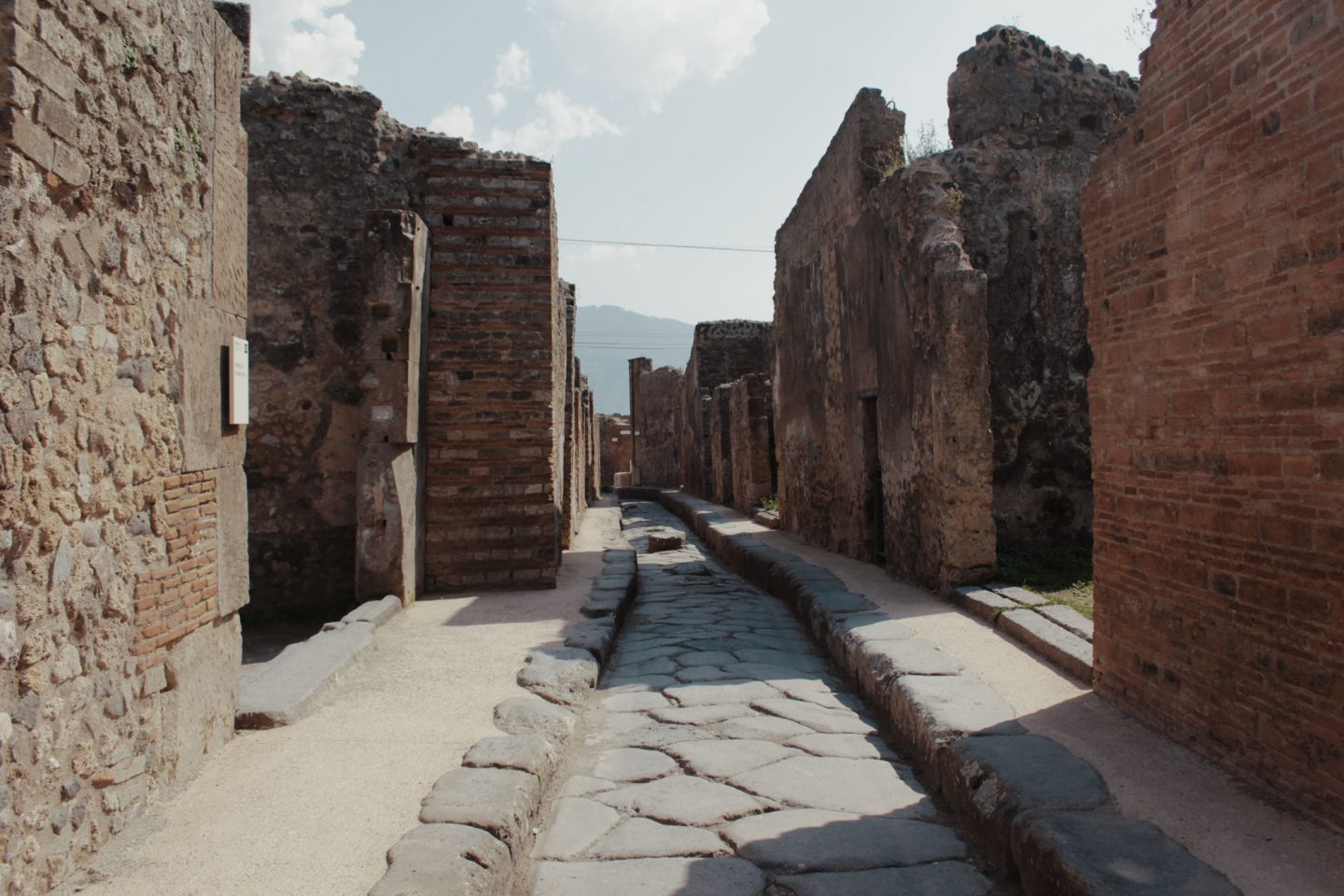
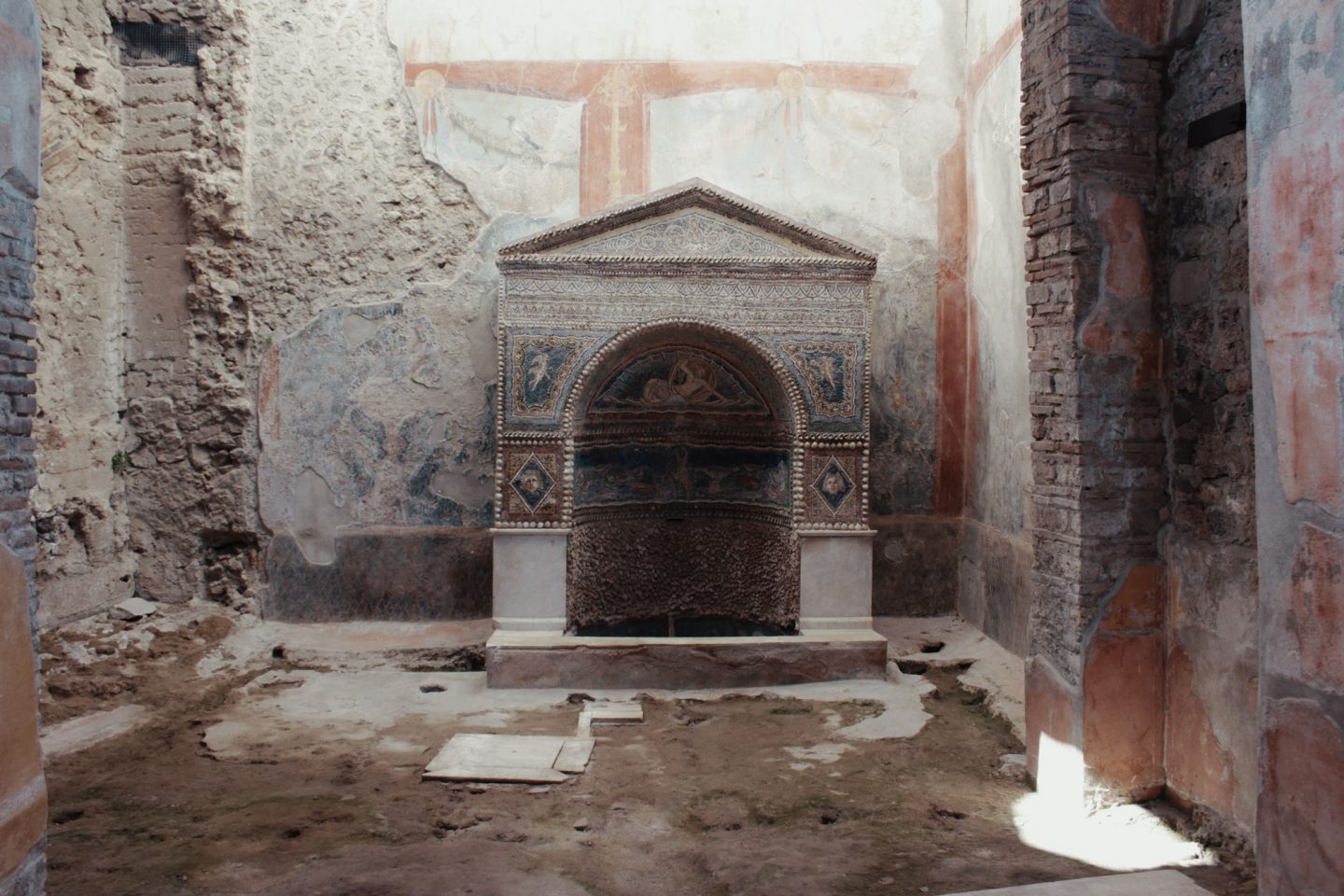

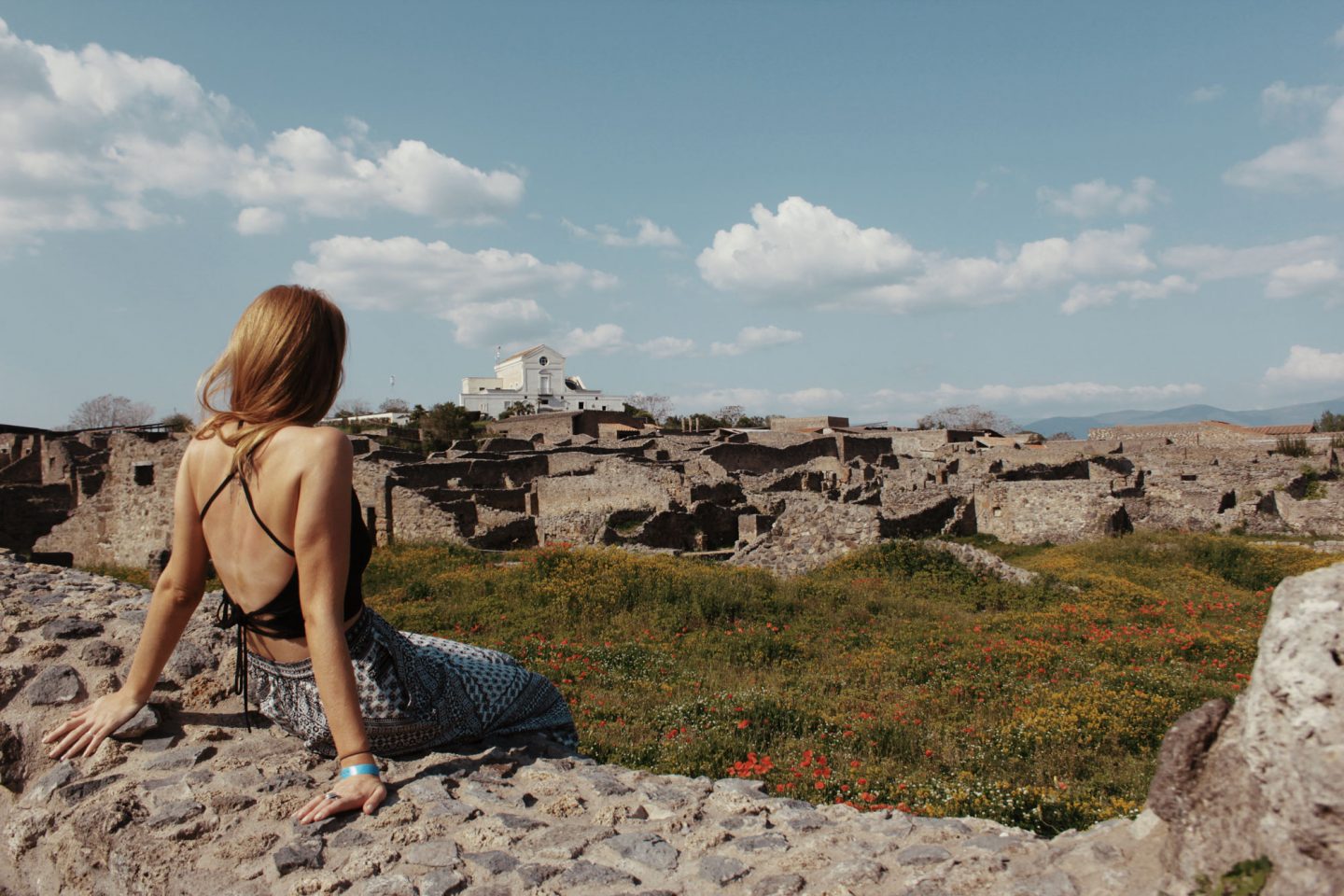
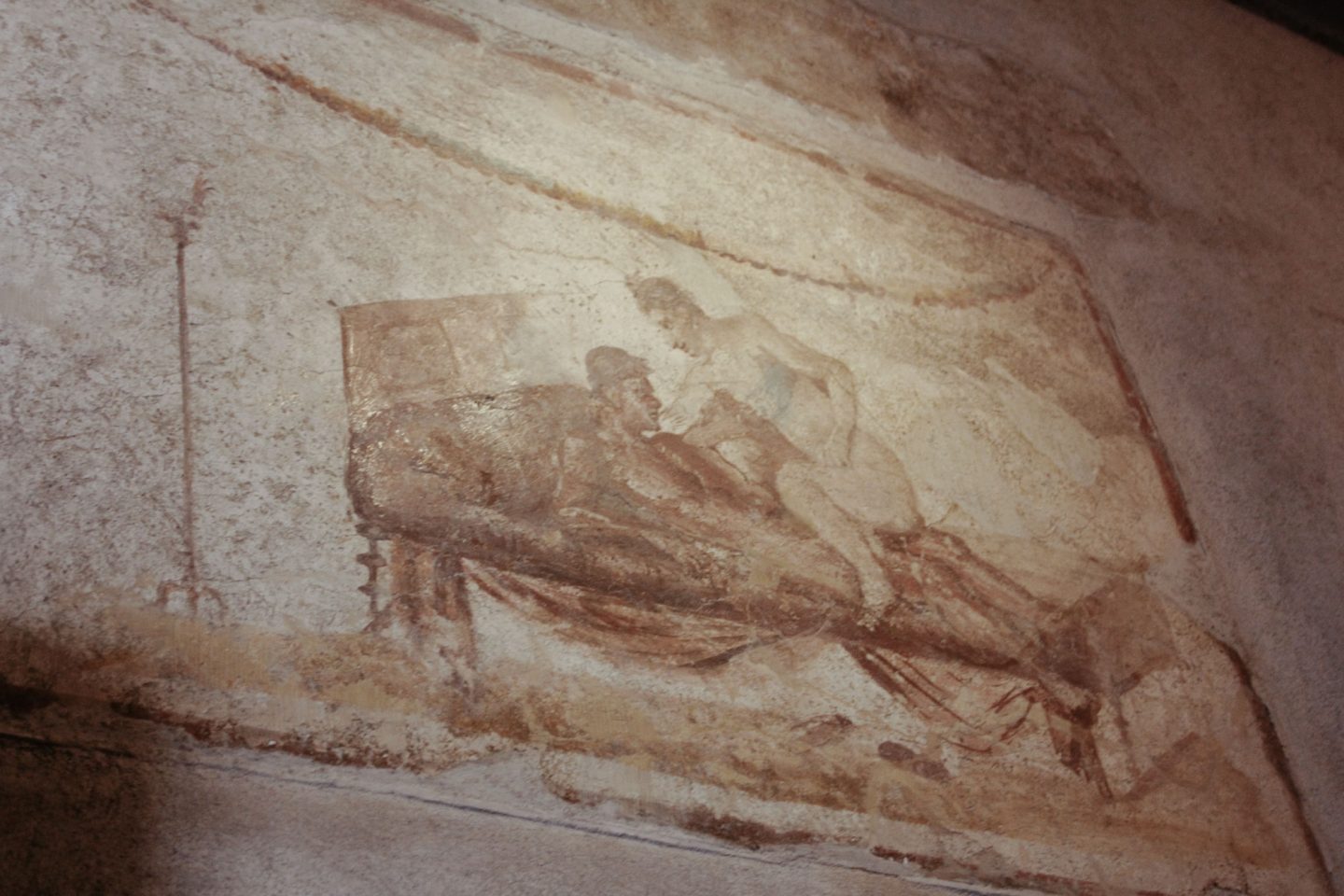
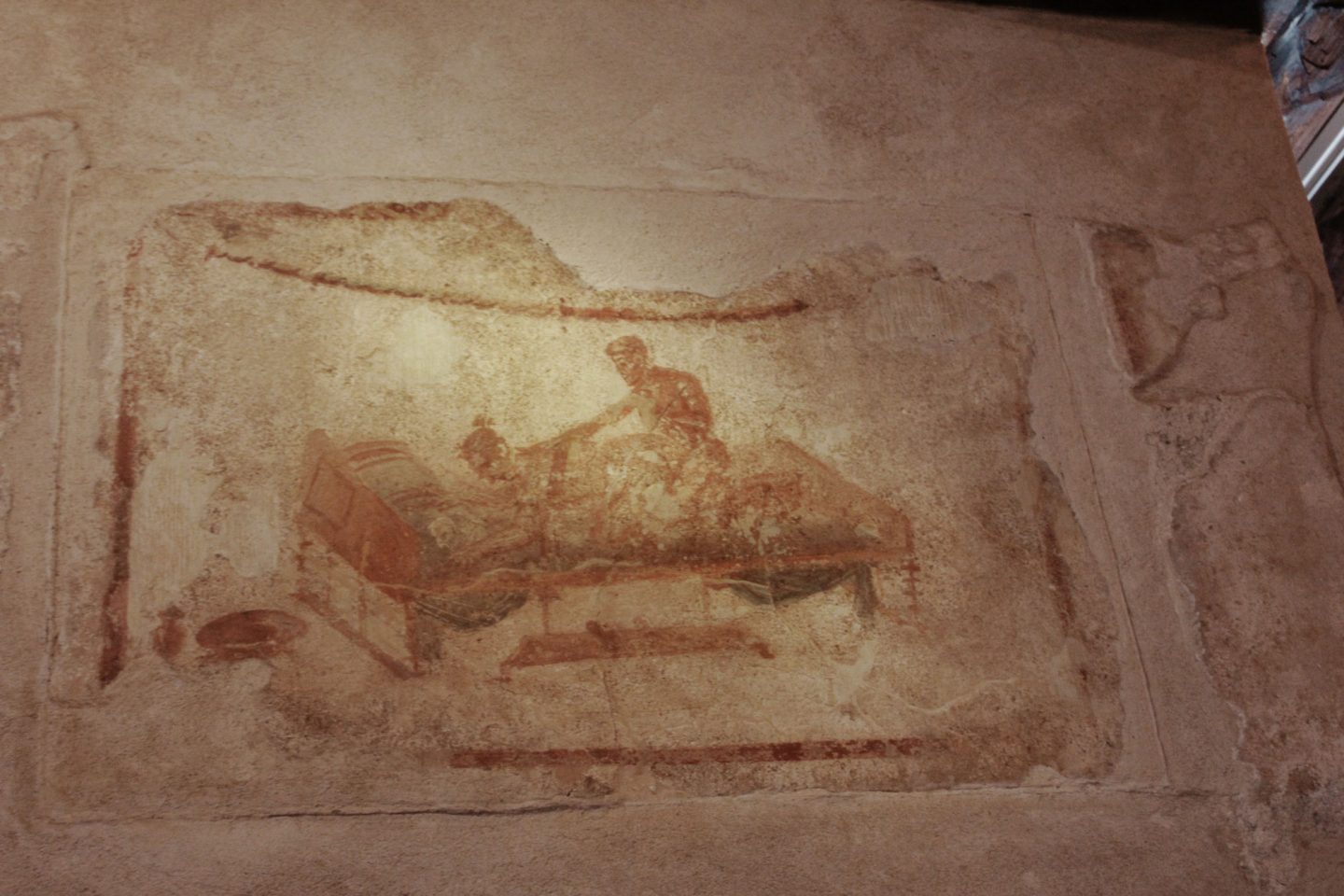
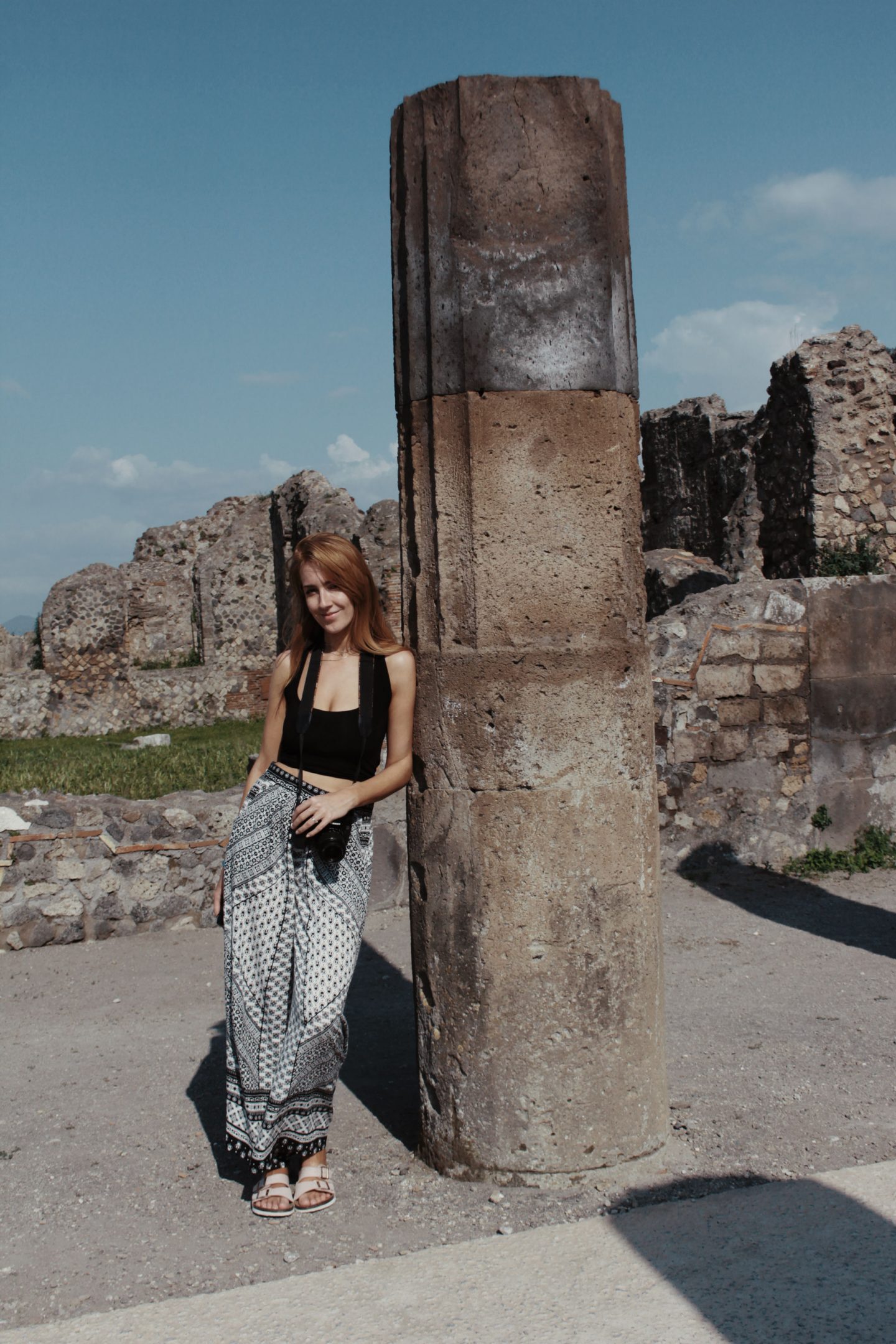
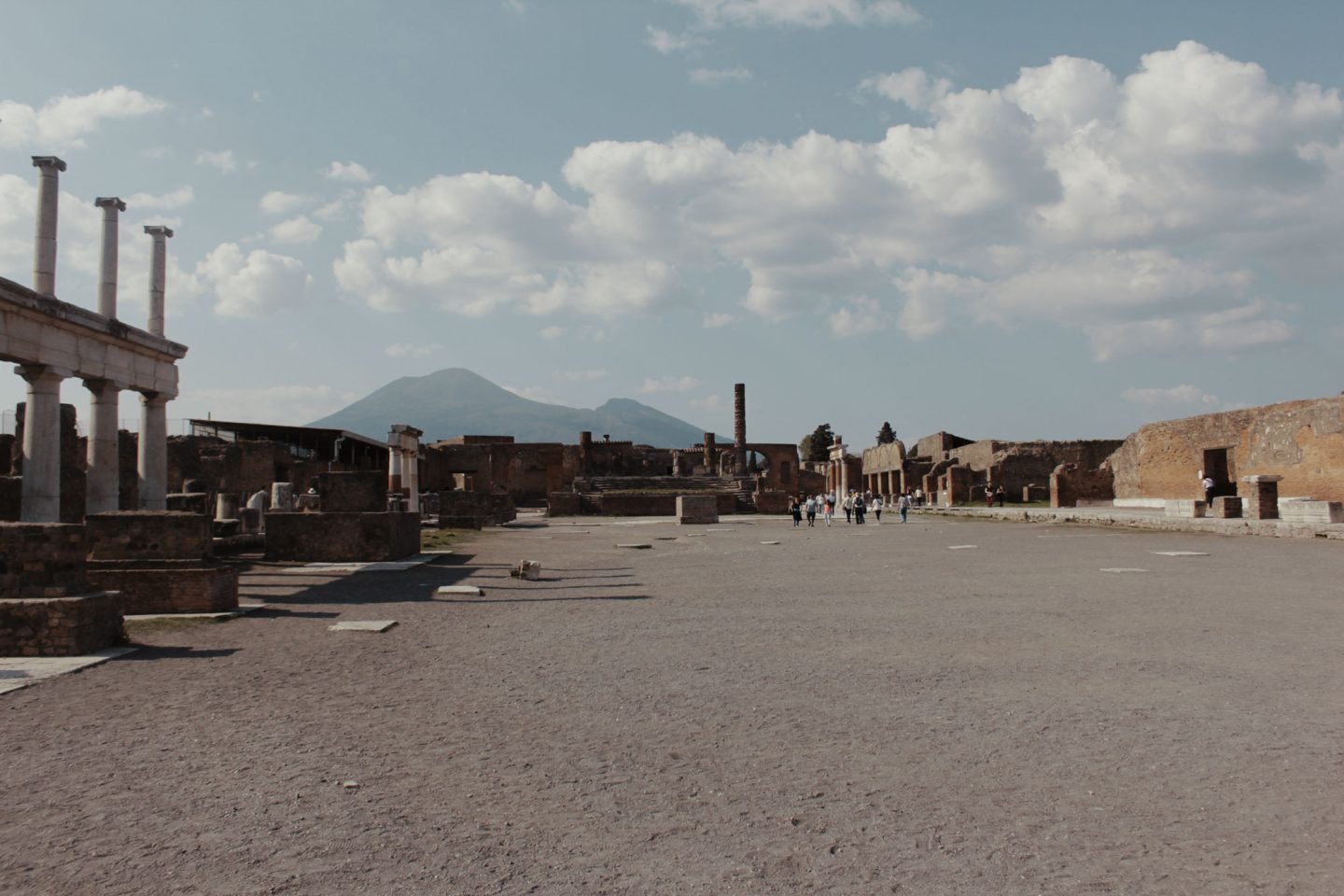
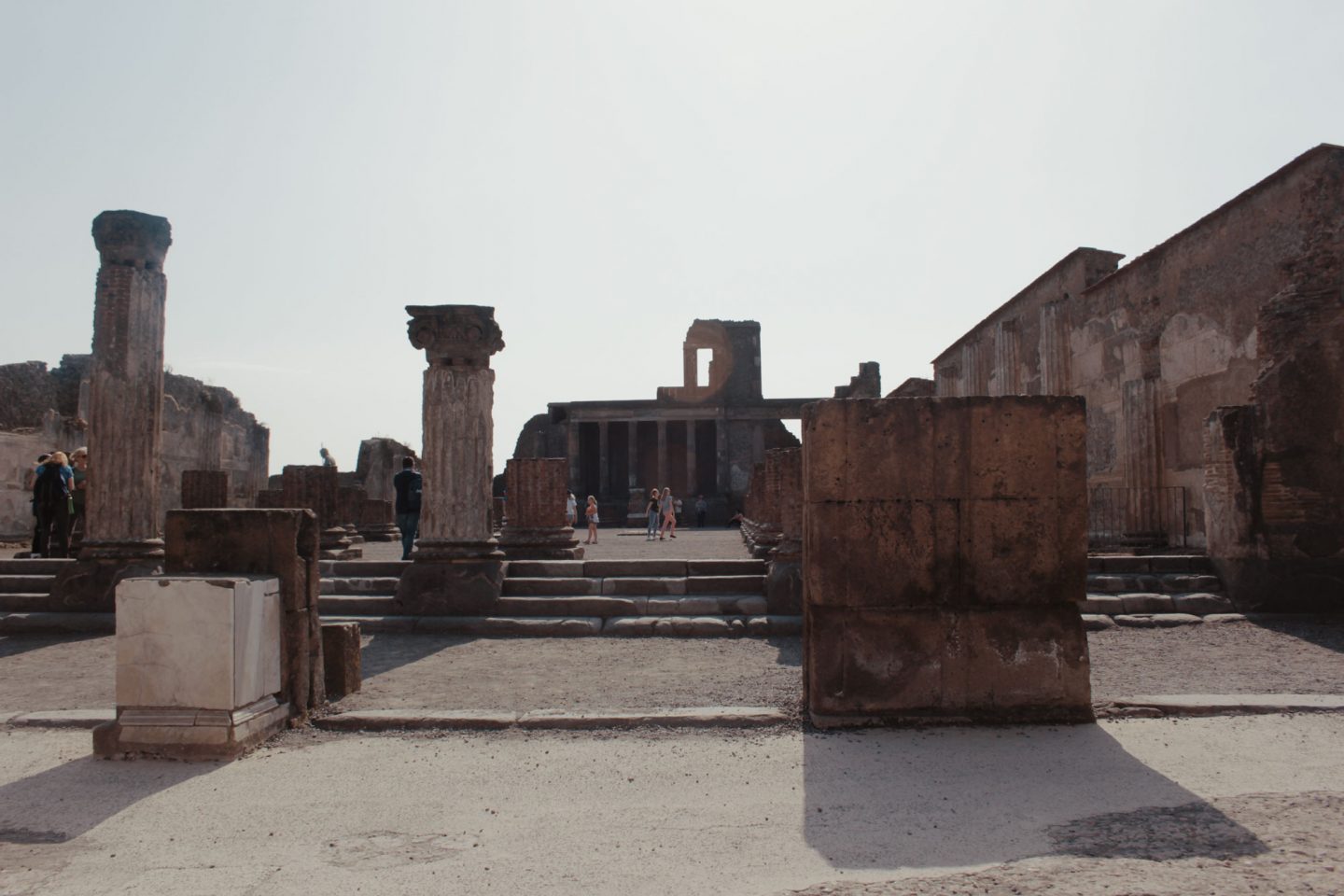
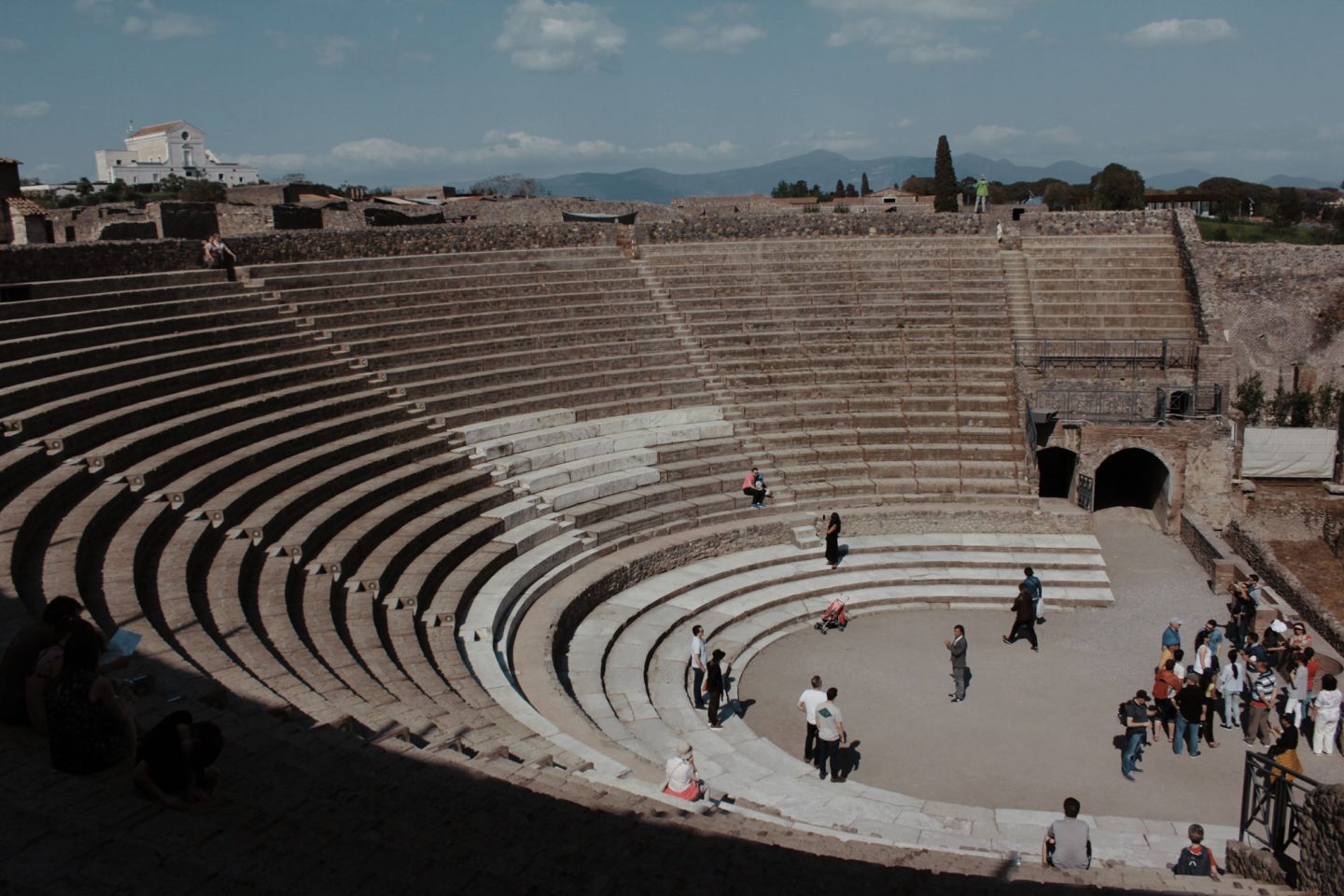
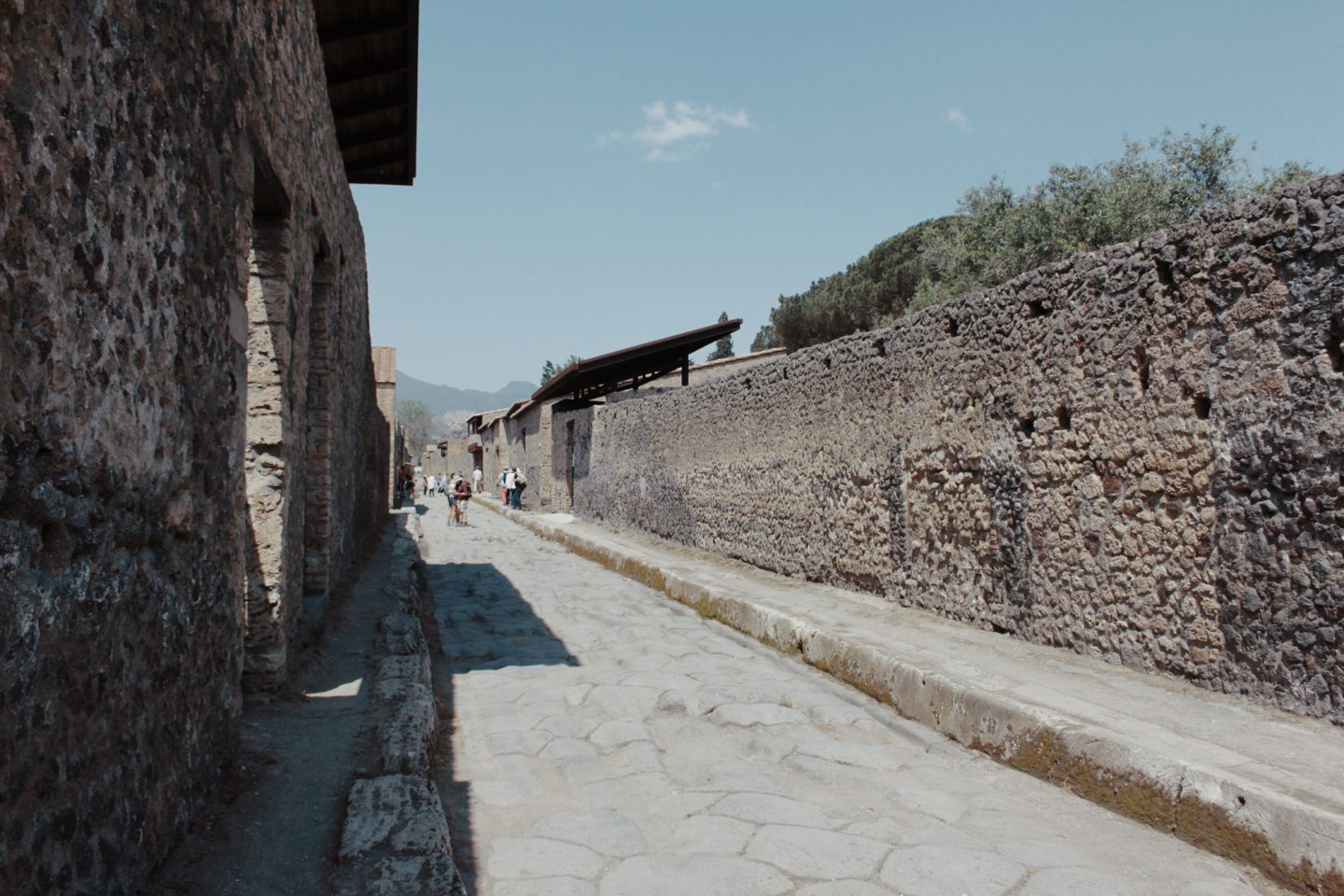
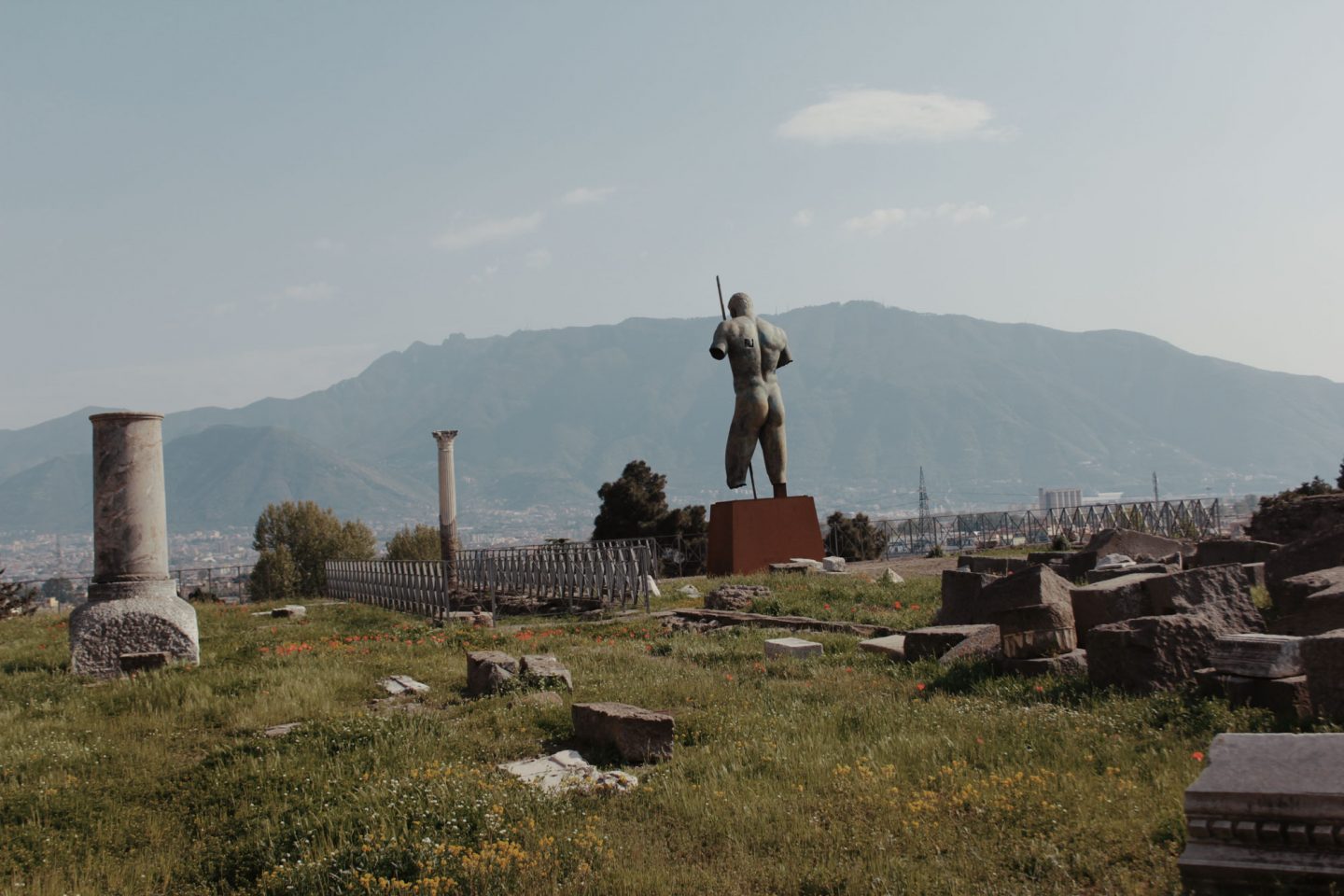
Exploring the Ruins
There’s no denying just how busy Pompeii can get. We visited mid-week in April and it was hectic. I can’t imagine what it must be like at the height of summer. We decided to see Pompeii back to front. We walked straight to the back of the ruins and worked our way from there. It was a good decision. As soon as we left the main road that runs through Pompeii, the crowds thinned and we could explore a little more leisurely. We spent the next 5 1/2 hours wandering among the ruins and could easily have spent 5 hours more. I’m not exaggerating when I say Pompeii is huge. And only 3/4 of it has been excavated! This was a wealthy, thriving Roman city that still has many secrets buried beneath it.
